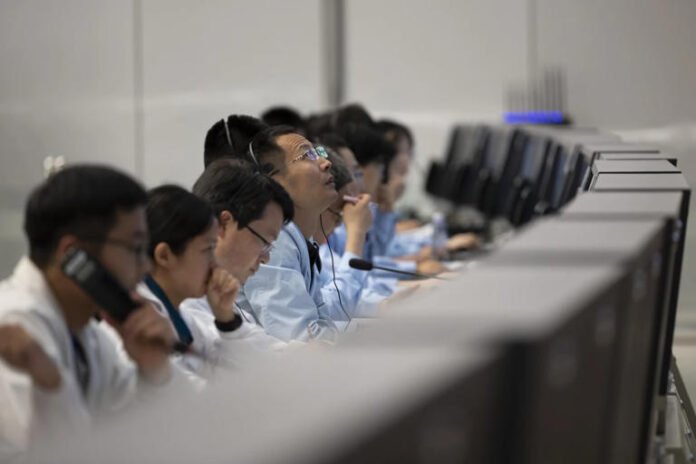China has successfully landed a spacecraft on the moon’s far side to collect lunar rocks, marking another significant milestone in its rapidly advancing space program. This mission underscores China’s growing capabilities in space exploration and signals a competitive stride in the ongoing space rivalry with the United States.
The Chang’e 5 mission, named after the Chinese moon goddess, achieved its historic landing on the moon’s far side, an area often referred to as the “dark side” because it is always facing away from Earth. This region of the moon has been relatively unexplored, presenting both significant scientific opportunities and technical challenges. The mission’s objective is to collect up to two kilograms of lunar soil and rock samples and return them to Earth, providing valuable data to scientists eager to learn more about the moon’s composition and history.
Landing on the far side of the moon presents unique difficulties due to the lack of direct communication with Earth. To overcome this, China deployed the Queqiao relay satellite in 2018, which orbits beyond the moon and enables communication between the lunar lander and mission control on Earth. This strategic move highlights China’s innovative approach to solving complex space exploration challenges.
The successful landing of Chang’e 5 is a testament to China’s burgeoning prowess in space technology. This mission follows the Chang’e 4 mission, which also landed on the moon’s far side in 2019, and the Chang’e 3 mission, which delivered a rover to the moon in 2013. These successive missions showcase China’s commitment to a sustained and ambitious lunar exploration program.
The lunar samples collected by Chang’e 5 will be the first returned to Earth since the Soviet Union’s Luna 24 mission in 1976. The analysis of these samples is expected to provide new insights into the moon’s geology and potentially its early history. By studying these materials, scientists hope to gain a better understanding of the processes that shaped the moon and, by extension, the early solar system.
China’s achievements in space exploration are part of a broader strategy to establish itself as a major space power. The country has outlined ambitious plans for the coming years, including the construction of a permanent space station, a mission to Mars, and even the potential establishment of a lunar base. These plans are seen as a direct challenge to the United States’ long-standing dominance in space exploration.
The growing space rivalry between China and the United States is reminiscent of the Cold War-era space race between the US and the Soviet Union. Both countries are investing heavily in their space programs, seeking to achieve technological superiority and demonstrate their scientific and engineering capabilities. This modern space race is not just about prestige; it has significant implications for national security, technological innovation, and economic growth.
The United States has responded to China’s advancements with renewed vigor. NASA’s Artemis program aims to return American astronauts to the moon by 2024, with the long-term goal of establishing a sustainable human presence on the lunar surface. Additionally, the US has been fostering partnerships with private companies such as SpaceX and Blue Origin to accelerate its space exploration efforts.
The competitive dynamic between China and the United States extends beyond lunar exploration. Both nations are vying for leadership in satellite technology, Mars exploration, and the development of space-based infrastructure. This competition is driving rapid advancements in technology and fostering a new era of exploration that could yield significant scientific and economic benefits.
China’s successful Chang’e 5 mission represents a major step forward in its quest to become a leading space power. By landing on the moon’s far side and collecting lunar samples, China has demonstrated its technical prowess and commitment to exploring the final frontier. As the space rivalry with the United States intensifies, the world can expect to witness more groundbreaking achievements that will expand our understanding of the universe and shape the future of human space exploration.
In this new era of space exploration, collaboration and competition will both play crucial roles. While the rivalry between China and the United States drives progress, there remains the potential for international cooperation that could enhance scientific discovery and benefit all of humanity. The journey to the moon and beyond is just beginning, and the stakes have never been higher.

